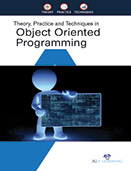Computer Science

Object Oriented Programming, often referred to as OOP, is a programming paradigm that was created to deal with the growing complexity of large software systems. The object-oriented paradigm allows us to organize software as a collection of objects that consist of both data and behavior. This is in contrast to conventional functional programming practice that only loosely connects data and behavior. Since the 1980s the word ‘object’ has appeared in relation to programming languages, with almost all languages developed since 1990 having object-oriented features. Some languages have even had object-oriented features retro-fitted. It is widely accepted that object-oriented programming is the most important and powerful way of creating software. Programmers found out very early on that as applications grew in complexity and size, they became very difficult to maintain. Programmers needed a way to create containers for data that could be changed and manipulated without affecting the entire program. A car is an example of a complex object, with many attributes. We don’t need to understand all of its internal mechanics, what kind of engine it has, how the gas makes it run, or even where the gas came from in order to know how to interact with it. The car’s behaviors have been made simple for us through object-oriented logic: put the key in the ignition, and the car turns on and gets us where we need to go. The attributes that make this possible—all of the car’s parts, electronics, and engineering—are a “package” we don’t need to break down in order to understand. Apply this to software building, and it allows developers to break down big, complicated projects into compartmentalized objects, program them to have attributes and behaviors, then essentially set them aside and focus on programming how the objects interact—a higher level of thinking that makes writing code less linear and more efficient. Modern, high-level languages like Python and Ruby are perfect examples of OOP. The fact that they’re able to be so streamlined gets right to the heart of OOP logic.
“Theory, Practice and Techniques in Object Oriented Programming” familiarizes to the changing technology, more and more students are finding the need for a simple introductory text covering object-oriented concepts, programming, analysis and design. This book introduces the Java Programming Language ad explains how to create Java applications and applets. It provides a framework for the integrated design of object-oriented programs with algebraic specification techniques.